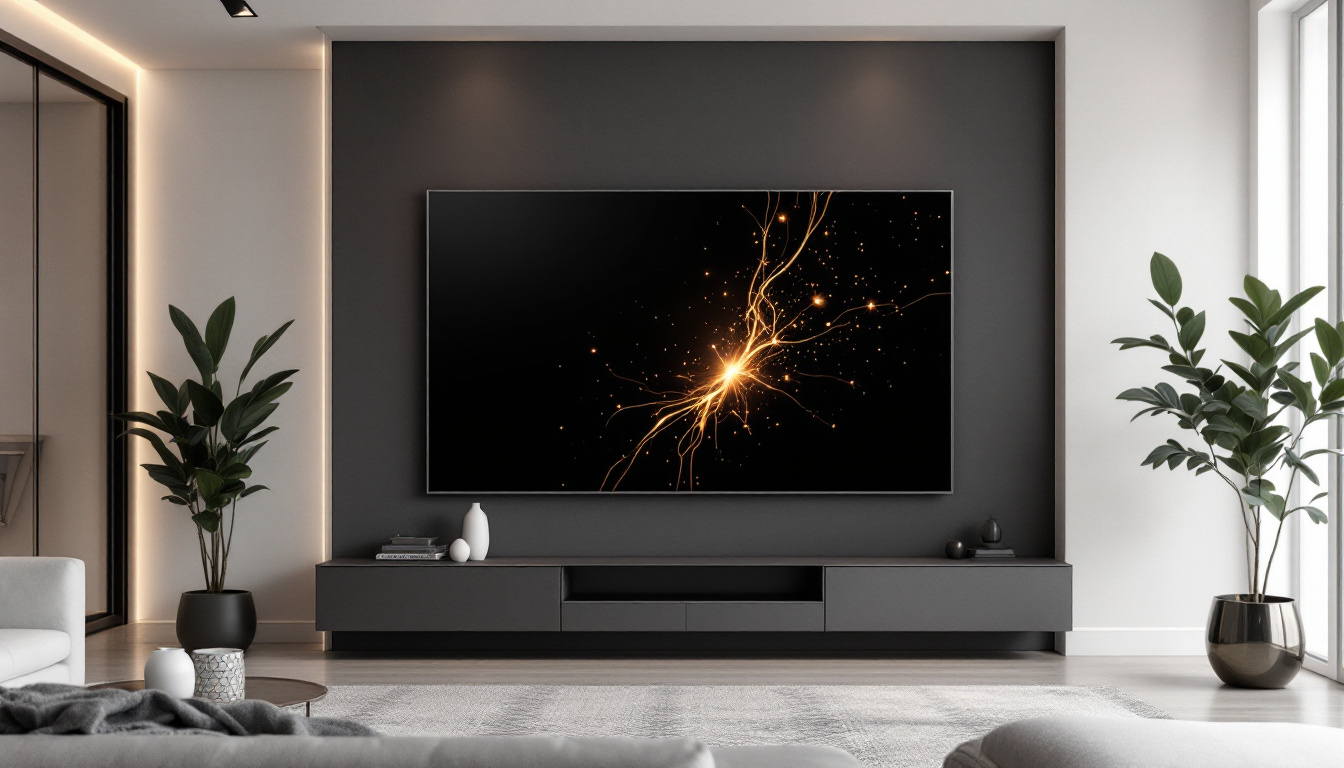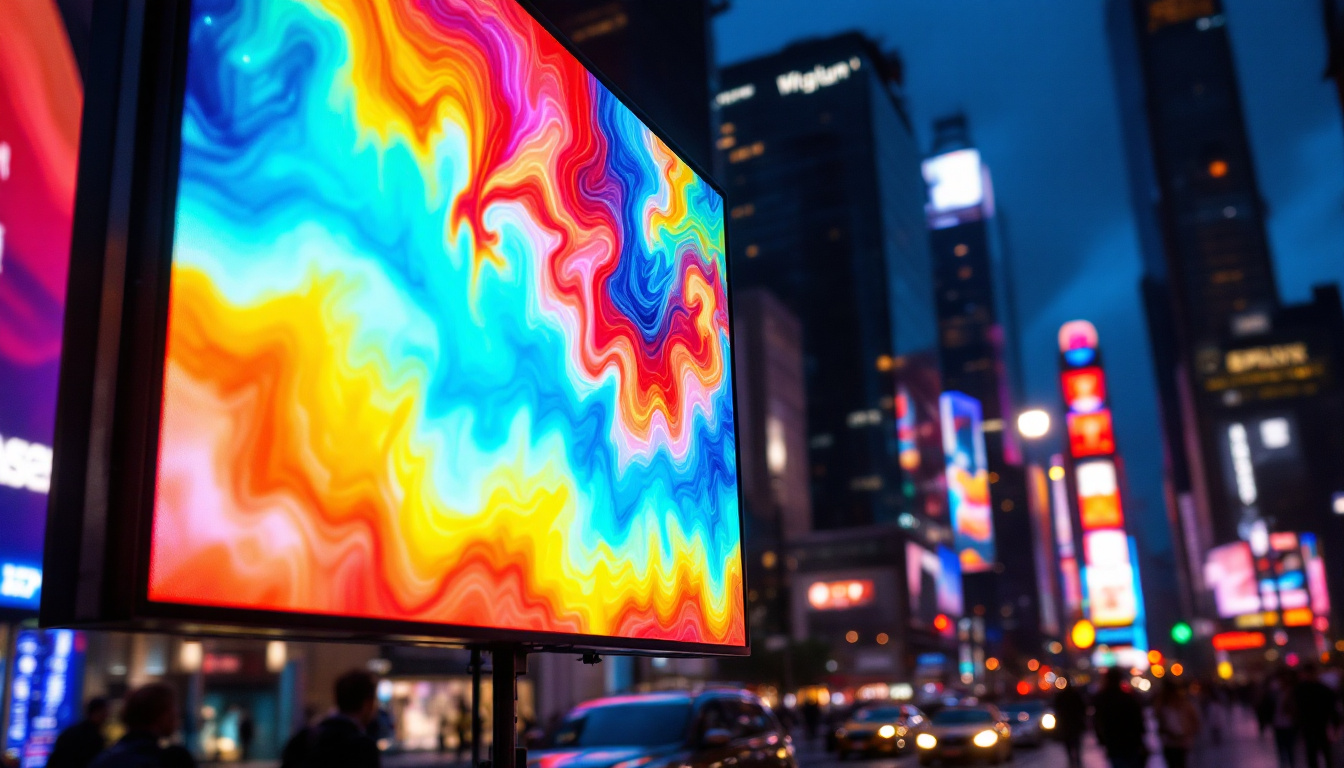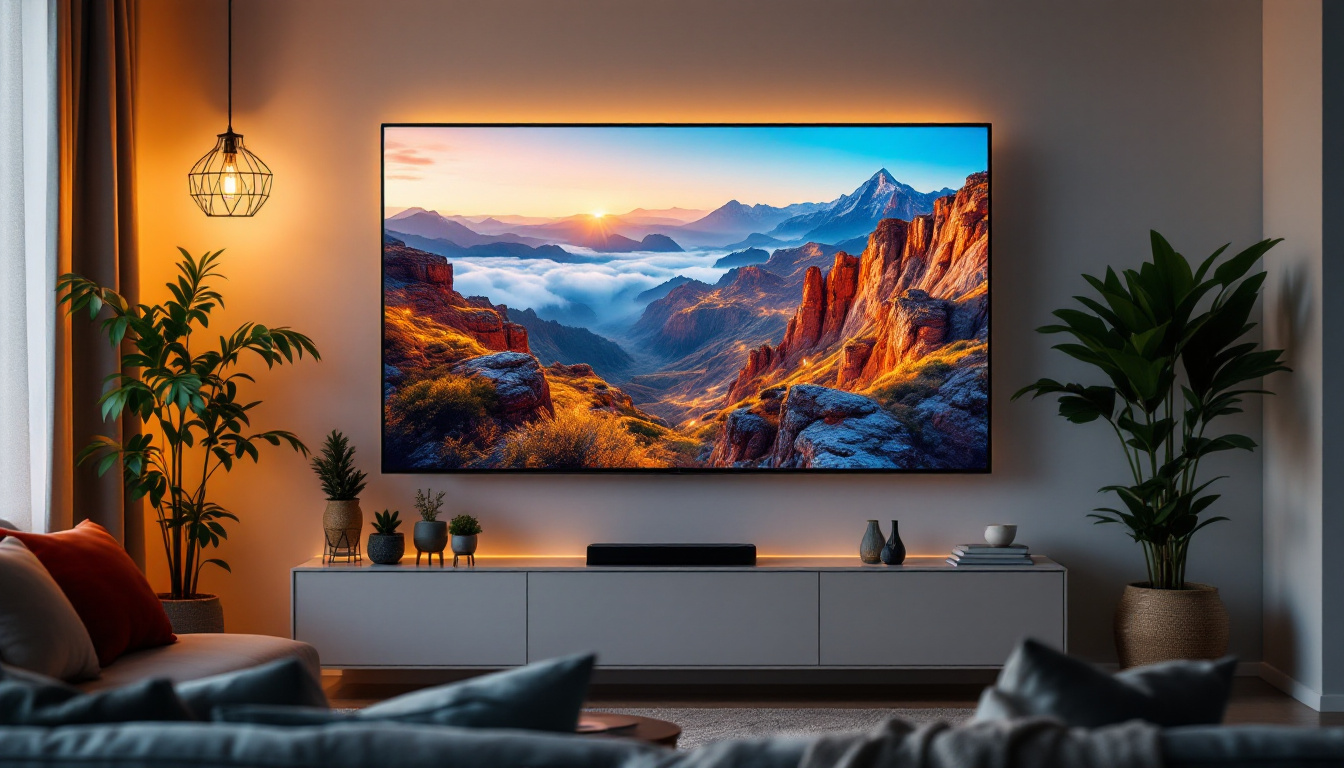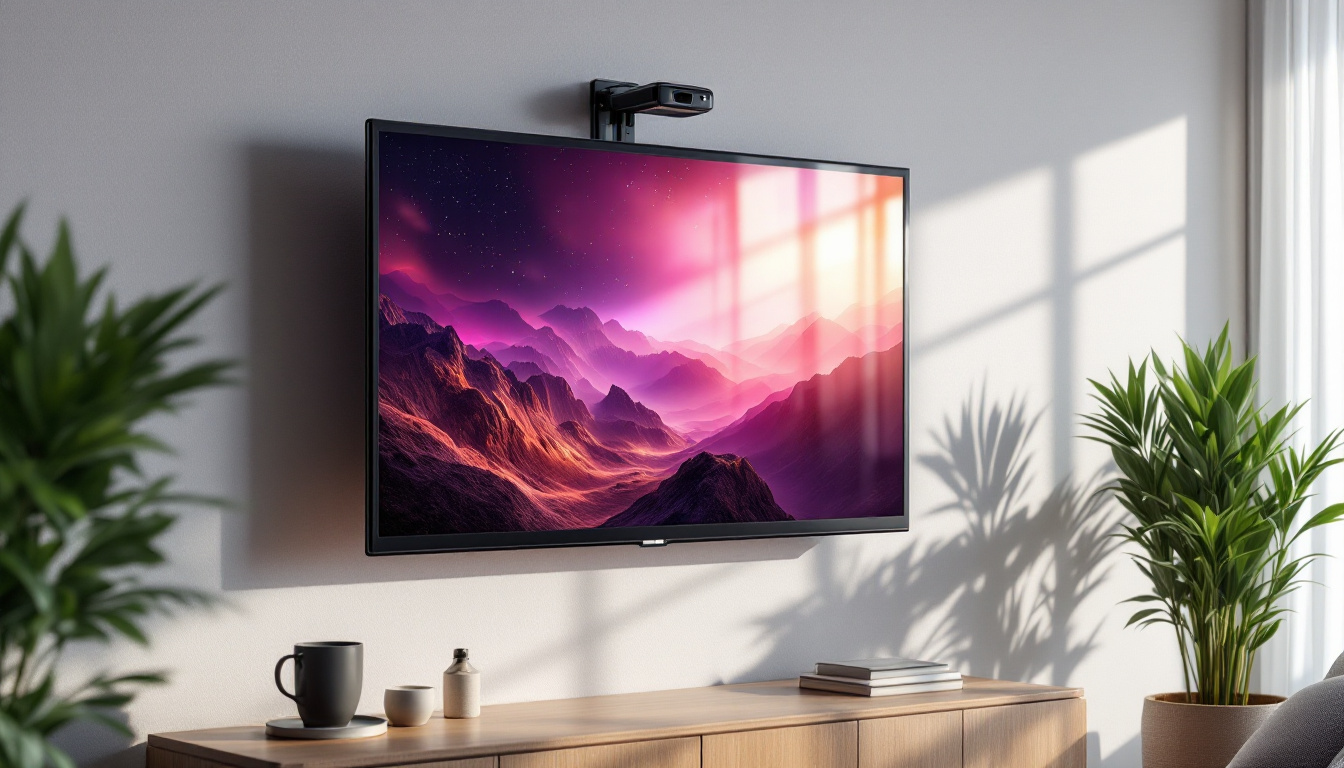In the world of digital displays, contrast is a critical factor that significantly influences the viewing experience. The clarity and vibrancy of images on a monitor can be attributed to its contrast ratio, which is particularly relevant when discussing LED displays. Understanding how contrast works in these monitors can help consumers make informed decisions when purchasing a new screen.
Understanding Contrast Ratio
The contrast ratio of a monitor is defined as the difference in light intensity between the brightest white and the darkest black that the display can produce. It is usually expressed as a ratio, such as 1000:1. A higher contrast ratio indicates a greater difference between the light and dark areas, resulting in more vivid images. This characteristic is particularly important when considering the viewing environment; for instance, a monitor used in a brightly lit room may require a higher contrast ratio to ensure that details are visible, while a dimly lit environment may allow for lower ratios without significant loss in quality.
Importance of Contrast Ratio
A high contrast ratio is essential for various applications, from gaming to graphic design. In gaming, for instance, a monitor with a superior contrast ratio can enhance the experience by providing deeper blacks and brighter highlights, allowing players to spot enemies lurking in shadows. This becomes particularly crucial in genres such as horror or stealth games, where visual cues can determine success or failure. For graphic designers, accurate color representation is crucial, and a high contrast ratio ensures that colors are displayed faithfully. Furthermore, in fields like photography and video editing, where precision is paramount, a monitor with a high contrast ratio can reveal subtle details and gradients that would otherwise go unnoticed, making it an indispensable tool for professionals.
How Contrast Ratio is Measured
Measuring contrast ratio can be somewhat complex, as it often involves specialized equipment. Generally, manufacturers measure the luminance of the brightest white and the darkest black the monitor can produce. The resulting values are then used to calculate the contrast ratio. However, it is important to note that not all manufacturers measure this in the same way, leading to discrepancies in advertised figures. Some may use peak brightness measurements, while others might focus on average brightness levels, which can skew the results. Additionally, the type of display technology—such as OLED, LCD, or LED—can significantly influence the perceived contrast ratio. OLED displays, for example, can achieve true blacks by turning off individual pixels, resulting in an infinite contrast ratio that is unmatched by traditional LCDs.
Types of LED Displays
LED displays come in various types, each with unique characteristics that affect contrast performance. Understanding these types can help consumers choose the right display for their needs.
Edge-Lit LED Displays
Edge-lit LED displays utilize LEDs positioned around the edges of the screen to illuminate the display. This design allows for a thinner profile, but it can lead to uneven lighting and lower contrast ratios, particularly in darker scenes. While these displays are often more affordable, their performance may not meet the expectations of users seeking high-quality visuals. Additionally, edge-lit displays can struggle with viewing angles, as the light may not be evenly distributed across the screen, resulting in color shifts and reduced brightness when viewed from the side. This makes them less suitable for large gatherings where multiple viewers are seated at different angles.
Full-Array LED Displays
Full-array LED displays feature a grid of LEDs behind the entire screen, providing more uniform lighting and better contrast ratios. This technology allows for local dimming, where specific areas of the screen can be dimmed or brightened independently. As a result, full-array displays can produce deeper blacks and brighter whites, making them ideal for watching movies or playing video games. Furthermore, full-array displays often come equipped with advanced processing technologies that enhance image quality by improving color accuracy and reducing motion blur. This makes them a popular choice among enthusiasts who prioritize immersive experiences in home theaters or gaming setups.
OLED Displays
While technically not LED, OLED (Organic Light Emitting Diode) displays are worth mentioning due to their exceptional contrast capabilities. Each pixel in an OLED display emits its own light, allowing for true blacks since individual pixels can be turned off completely. This results in an infinite contrast ratio, making OLED displays highly sought after for their stunning image quality. In addition to their superior contrast, OLED displays offer vibrant colors and fast response times, making them ideal for fast-paced content such as sports and action films. However, potential buyers should be aware of the risk of burn-in, where static images can leave a permanent mark on the screen if displayed for extended periods. Despite this drawback, many users find that the visual benefits of OLED technology far outweigh the risks, especially in dynamic viewing environments.
Factors Affecting Contrast in LED Displays
Several factors can influence the contrast performance of LED displays, making it essential for consumers to consider these elements when selecting a monitor.
Ambient Lighting Conditions
The environment in which a monitor is used can significantly impact its perceived contrast. In brightly lit rooms, reflections and glare can wash out colors and reduce the overall contrast. Conversely, in darker settings, monitors can showcase their full contrast potential. Users should consider their typical usage environment when choosing a display. For instance, a monitor used in a home office with controlled lighting can provide a more immersive experience for graphic design or video editing tasks. Additionally, utilizing anti-glare screens or positioning the monitor away from direct light sources can help mitigate the effects of ambient lighting, allowing for a more vibrant display of colors and deeper blacks.
Panel Technology
The type of panel technology used in a monitor can also affect contrast performance. In-Plane Switching (IPS) panels, for example, offer better color accuracy and viewing angles but may have lower contrast ratios compared to Twisted Nematic (TN) panels. Understanding the trade-offs between different panel types can help users select a monitor that meets their specific needs. For instance, while TN panels may excel in fast refresh rates and lower response times, making them ideal for competitive gaming, IPS panels provide a more consistent viewing experience for collaborative work or media consumption. Furthermore, advancements in panel technology, such as VA (Vertical Alignment) panels, have emerged, offering a middle ground with improved contrast ratios while still maintaining decent color reproduction and viewing angles.
Calibration and Settings
Proper calibration can enhance the contrast performance of a monitor. Many displays come with preset modes that can be adjusted to suit different viewing preferences. Users can tweak brightness, contrast, and color settings to achieve optimal performance. Regular calibration ensures that the monitor maintains its intended contrast levels over time. Moreover, utilizing calibration tools, such as colorimeters, can provide a more precise adjustment, allowing users to achieve professional-grade color accuracy. This is particularly beneficial for photographers and videographers who rely on accurate color representation for their work. Additionally, some monitors offer advanced features like HDR (High Dynamic Range) support, which can further enhance contrast by expanding the range of brightness and color detail, making it crucial for users to explore these settings to fully leverage their display’s capabilities.
Applications of High Contrast Monitors
High contrast monitors are not just a luxury; they serve practical purposes across various fields. Their applications range from professional environments to entertainment, each benefiting from improved visual performance.
Professional Use in Design and Photography
In fields like graphic design and photography, accurate color representation and detail are paramount. Monitors with high contrast ratios allow professionals to see subtle differences in shades and tones, ensuring that their work translates well across various media. This precision is crucial for tasks such as photo editing, where even the slightest discrepancy can lead to unsatisfactory results.
Gaming and Entertainment
Gamers and movie enthusiasts also benefit from high contrast monitors. The immersive experience provided by deep blacks and bright highlights enhances gameplay and viewing pleasure. In fast-paced games, the ability to discern details in shadowy areas can provide a competitive edge, while movies come to life with rich visuals that draw viewers into the narrative.
Medical Imaging and Scientific Research
In medical imaging, monitors with high contrast ratios are essential for accurately diagnosing conditions. Radiologists rely on these displays to view X-rays, MRIs, and other imaging modalities, where detail is critical. Similarly, in scientific research, high contrast monitors can reveal intricate details in data visualizations, aiding in analysis and interpretation.
Choosing the Right Monitor for Your Needs
When selecting a monitor, understanding contrast is just one piece of the puzzle. Several other factors come into play, and consumers should consider their specific needs and preferences.
Assessing Usage Scenarios
Before making a purchase, users should assess how they plan to use the monitor. For general office tasks, a standard contrast ratio may suffice. However, for creative work, gaming, or media consumption, investing in a monitor with a higher contrast ratio will enhance the experience significantly. Identifying the primary use case can guide the decision-making process.
Budget Considerations
Budget is another critical factor when choosing a monitor. While high-end models with superior contrast ratios offer exceptional performance, they may not fit every budget. Consumers should balance their desire for quality with their financial constraints, seeking the best value for their needs. It is often possible to find mid-range monitors that still deliver impressive contrast without breaking the bank.
Brand Reputation and Reviews
Researching brands and reading reviews can provide insights into the performance and reliability of different monitors. Reputable brands often invest in quality control and customer support, ensuring that users have a positive experience. Reviews from other consumers can highlight strengths and weaknesses, helping potential buyers make informed choices.
Conclusion
Understanding contrast in monitors, particularly LED displays, is essential for anyone looking to enhance their digital experience. From gaming to professional applications, the contrast ratio plays a crucial role in how images are perceived. By considering the various types of LED displays, factors affecting contrast, and specific usage scenarios, consumers can make educated decisions when purchasing a monitor.
As technology continues to evolve, the options available for consumers will only expand. Keeping abreast of advancements in display technology and understanding the importance of contrast will ensure that users can enjoy the best possible visual experience, tailored to their unique needs and preferences.
Discover the Future of Visual Experience with LumenMatrix
Ready to elevate your visual experience with a high-contrast monitor that meets your professional or entertainment needs? Look no further than LumenMatrix, a leader in LED display technology. Our innovative solutions, from Indoor and Outdoor LED Wall Displays to specialized options like Vehicle, Sports, and Floor LED Displays, are designed to bring your content to life with unparalleled clarity and vibrancy. Whether you’re looking to create an impactful brand presence or immerse yourself in a captivating visual journey, LumenMatrix has the cutting-edge technology to transform your vision into reality. Check out LumenMatrix LED Display Solutions today and join the revolution in visual communication.































